we finally made it: we moved into our new home. this was exciting, not only because we had never before moved into a new house we built ourselves. of course, we didn’t really ‘physically’ build all of it ourselves, but we definitely very much ’emotionally’ participated every step of the way. nat and i had previously moved most pieces of furniture into place, but a lot of our stuff was still in masses of boxes spread between the shed and the garage.
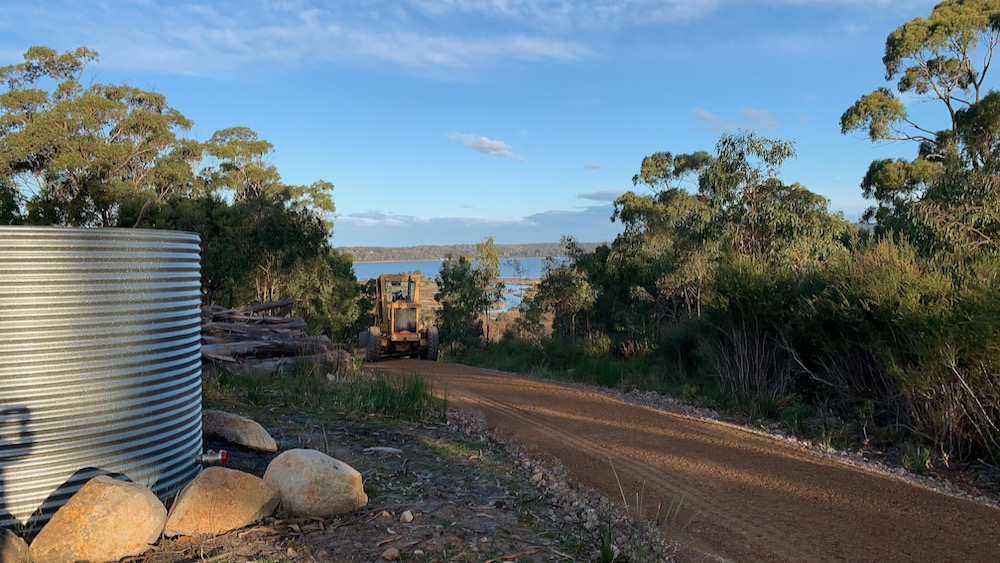
while the inside of the house was at this point finished (with the exception of a few smaller issues that still needed to be addressed) there was still a fair bit of work left to make the area around the house look presentable. early on in the project we had a consistent layer of thick gravel spread there; the area is naturally loamy and even just a little rain turned the place where the tradies parked, set up their tools and walked around into a quagmire – hence the need for a stabilising layer of stones.
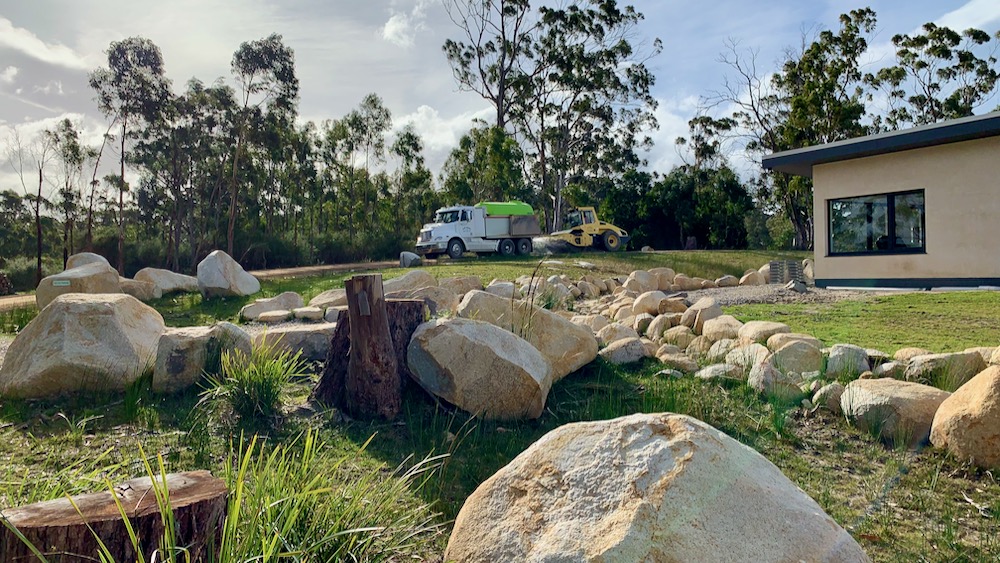
since we had already completed the landscaping around the east, south and west side of the house, fixing up the north side was the biggest job left. in addition, kris had expressed her discontent with the last few meters of the dry creek bed in the northeast corner and wanted me to reconstruct that area. this is the boggiest part of the drainage system, and also maybe the most important one, given it’s right at the entrance from the road to the garage (on the right side in the photo below), so it made sense to ensure it would work properly.
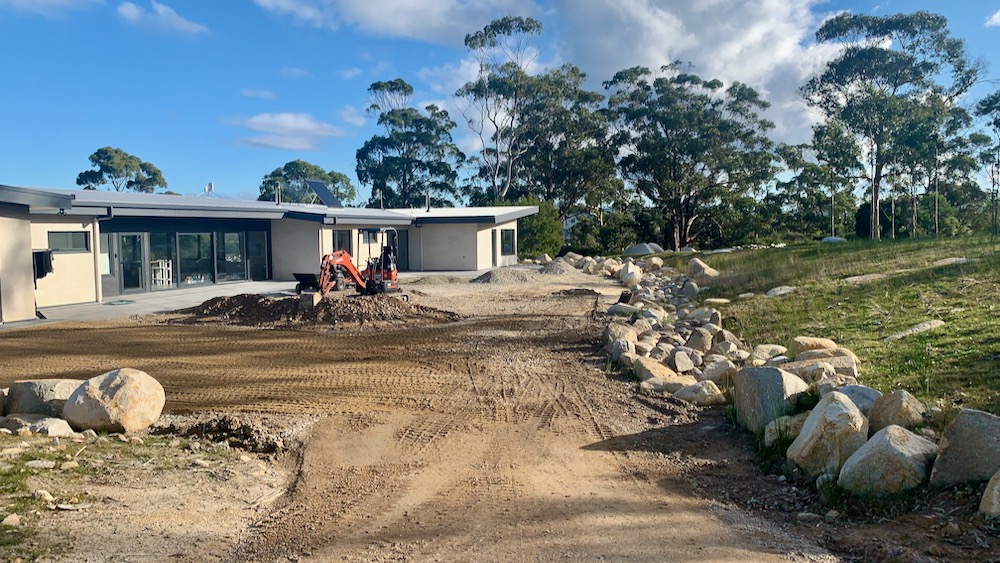
speaking of the road: with little more heavy traffic expected going forward we felt this was the right time to address the issues with our road. to put this in perspective: we are not talking about a short driveway, this is approximately 600 meters of road with a maximum gradient of around 10%. the fact that st helens often gets strong downpours means storm water management and erosion control are not merely theoretical questions. the part of the road we had had constructed early in the project was very well done, with a deep drainage channel and substantial (i believe 60 mm) base, but the original straight and steep way up was only thin gravel over dirt, and as a result of the wear and tear combined with weather erosion now had deep grooves in it.
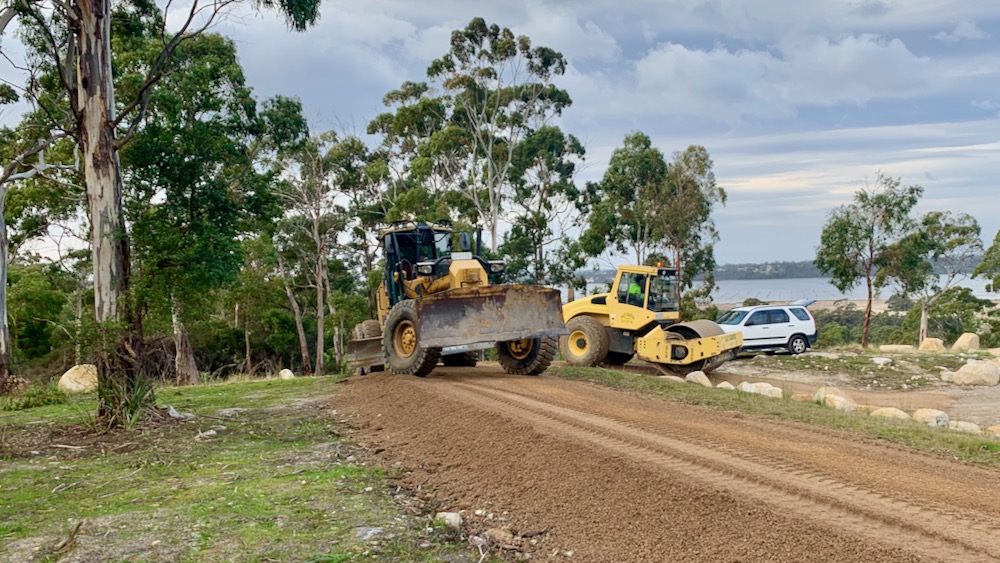
it took a grader, a roller and almost 40 truckloads of 20 mm road base to create a new surface that now feels smooth as a baby’s bum and hard as any road surface that looks like it might hold up to a bit of punishment. let’s hope it does.
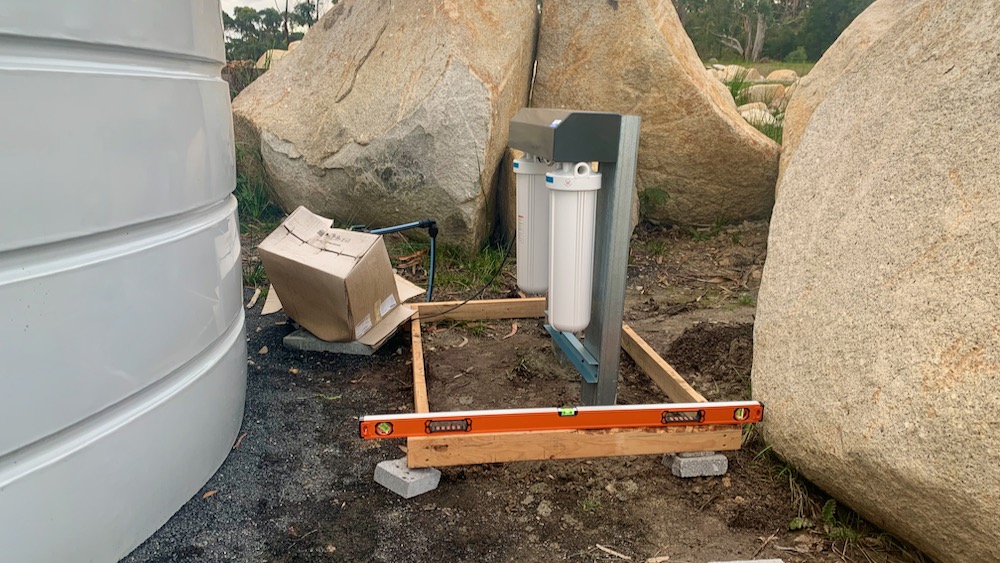
while heavy machinery was reconstructing our road we also had to address the substandard (i’m being kind here: see the thoughtfully placed top quality ‘recycled cover’ over the pump?) installation of the house water pump. kris also wanted a water filtration and treatment system, and of course we don’t like to leave these units out in the weather; a little concrete slab as a foundation for the equipment and a small garden shed should provide adequate protection.
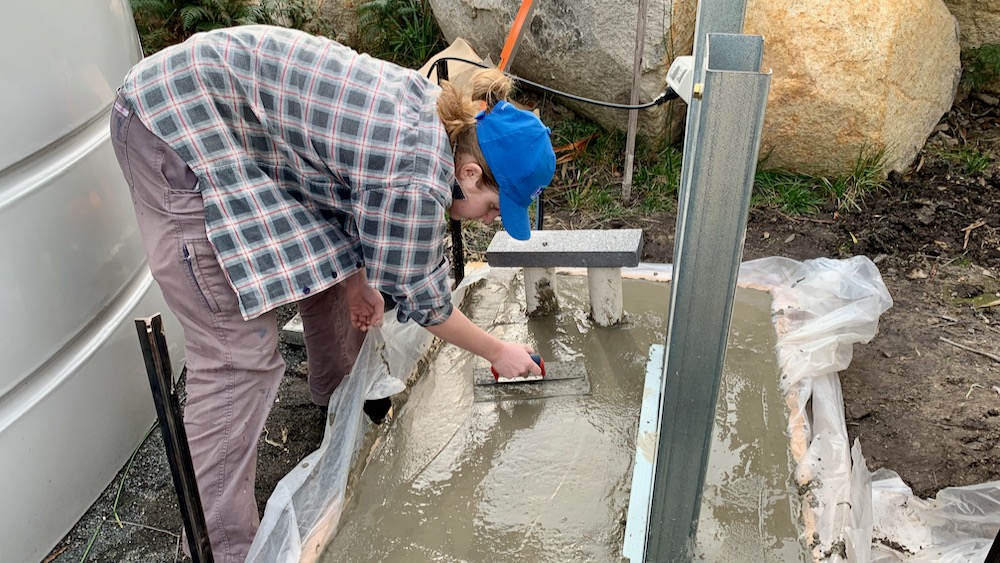
we poured a small slab (with the prerequisite plastic wrap to ensure the concrete dries evenly and a few steel reinforcements) and nat did an excellent job creating a very smooth surface. the two massive round filters remove particles, and on top are are two cylinders with ultraviolet light tubes (under the grey cover) that should kill most bacteria.
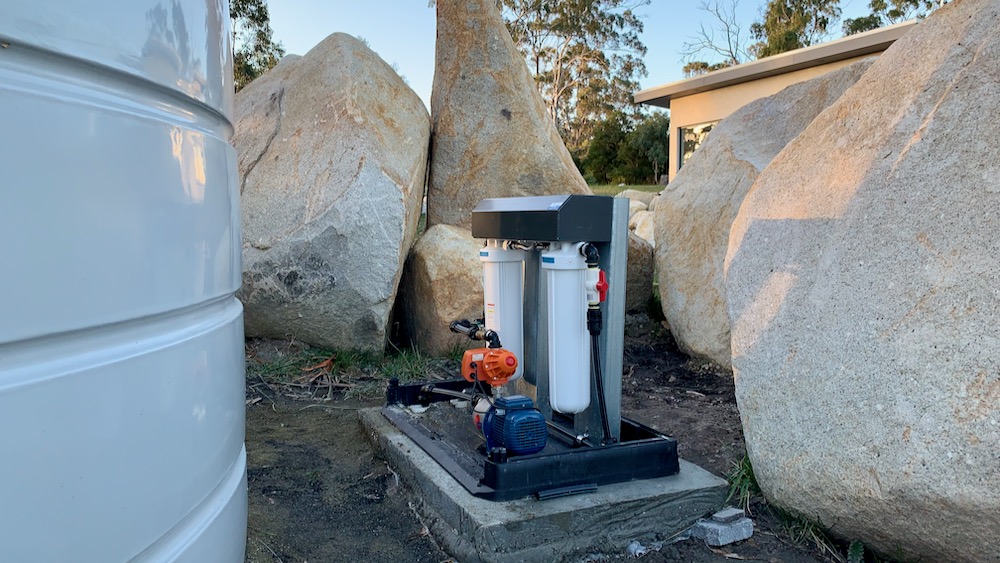
nat built the new shed as well, she figured it out pretty easily. i think i can retire now, about time too. we brought the in and outlet pipes in from underneath the slab to keep things clean, but it wasn’t easy to get all the joins to seal with the little available room. it took us some time to chase down a few small leaks but it should be all good now. we’ll check next time for suspicious wet spots.
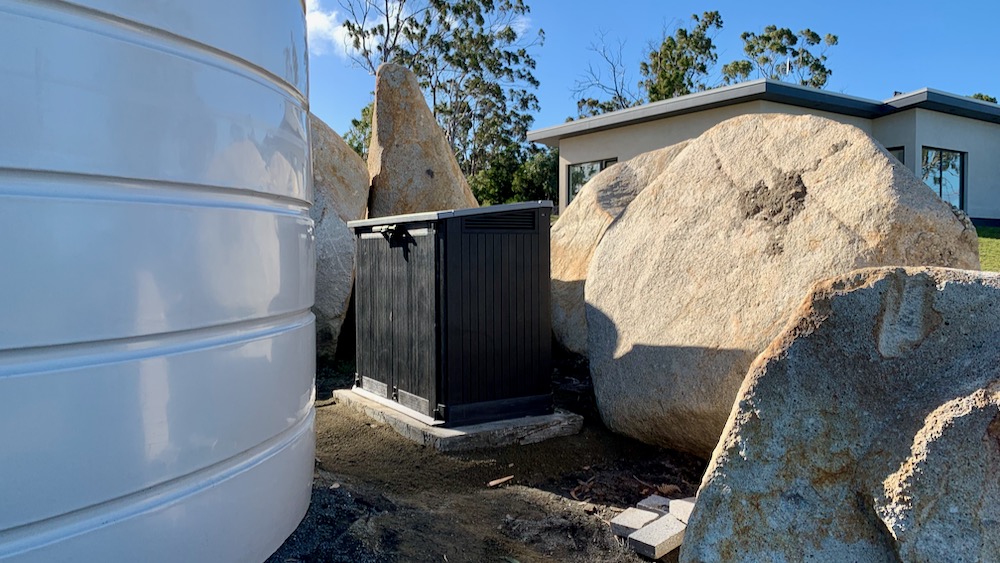
the new housing is a whole lot better then the old one, wouldn’t you say? it’s good to keep the equipment out of the sun and rain.
